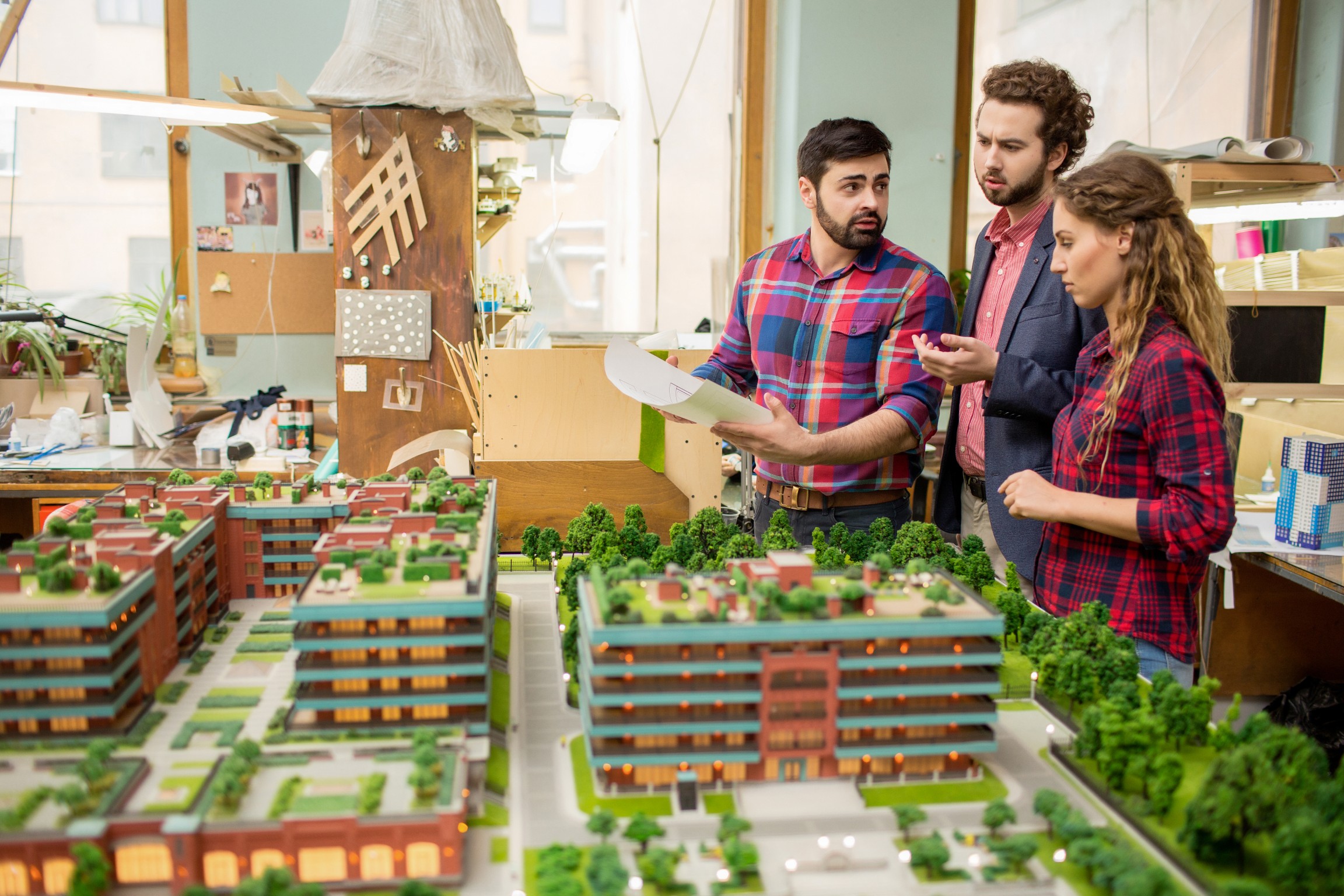Reimagining Mixed-Use Developments: The Future of Integrated Living and Working Spaces

Imagine living in a space where you can work, shop, dine, and relax—all within walking distance. Mixed-use developments are reshaping urban landscapes by blending residential, commercial, and recreational spaces into cohesive, self-sustaining communities. These developments respond to the increasing demand for convenience, connectivity, and community in urban living.
This blog explores the trends, challenges, and innovations driving the rise of mixed-use developments and how they are redefining modern urban planning.
The concept of mixed-use developments dates back to ancient civilizations, with cities like Rome and Istanbul thriving on integrated spaces. Today, this model is undergoing a renaissance, driven by urbanization, changing lifestyles, and sustainability goals.
Key Drivers:
Urbanization: By 2050, nearly 70% of the global population will live in cities, intensifying the demand for efficient land use.
Sustainability Goals: Mixed-use developments reduce commuting distances, promote public transport, and minimize carbon footprints.
Post-Pandemic Shifts: The rise of remote work and the need for multi-functional spaces have further popularized this concept.
Mixed-use developments typically blend the following components:
Residential Spaces: Apartments, condos, and co-living spaces designed for convenience and proximity.
Commercial Hubs: Offices, coworking spaces, and business centers fostering economic activity.
Retail and Dining: Shopping malls, boutique stores, and restaurants creating vibrant community hubs.
Recreational Areas: Parks, gyms, theaters, and cultural spaces promoting wellness and entertainment.
Transit-Oriented Design: Proximity to public transport ensures easy accessibility.
Complex Planning: Integrating multiple functions into a cohesive design requires meticulous planning.
Zoning Restrictions: Developers often face challenges with land-use regulations and zoning laws.
Cost Overruns: Mixed-use projects demand significant investment in infrastructure and design, often leading to budget constraints.
Community Integration: Striking a balance between residential and commercial needs can be challenging.
Technology is playing a pivotal role in shaping successful mixed-use developments:
1. Smart City Technologies
IoT-enabled devices monitor energy usage, traffic flow, and public safety, ensuring seamless operations.
2. Virtual Design Tools
3D modeling and BIM (Building Information Modeling) facilitate integrated designs that optimize space utilization.
3. Sustainable Building Solutions
Green roofs, solar panels, and rainwater harvesting systems enhance sustainability.
4. Tenant Experience Apps
Mobile platforms allow residents and tenants to access services, book amenities, and provide feedback in real-time.
Core Elements of Mixed-Use Developments
Residential: High-density housing, luxury apartments, co-living spaces.
Commercial: Office towers, coworking hubs, startup incubators.
Retail: Flagship stores, dining options, entertainment venues.
Green Spaces: Parks, jogging tracks, eco-friendly landscaping.
1. Hudson Yards, New York City
A $25 billion project, Hudson Yards is one of the largest mixed-use developments in the U.S., featuring:
Residential towers with state-of-the-art amenities.
Offices for global firms like BlackRock and Facebook.
The Shed, a cultural center hosting exhibitions and performances.
Green spaces and public plazas promoting community engagement.
2. Marina Bay Sands, Singapore
This iconic development blends luxury hotels, a shopping mall, a casino, and an infinity pool overlooking the city skyline. It exemplifies how mixed-use spaces can redefine urban tourism.
3. King’s Cross, London
Once an industrial wasteland, King’s Cross has transformed into a vibrant mixed-use hub with offices, residential spaces, and cultural venues. The development prioritizes sustainability, with solar panels, green roofs, and energy-efficient designs.
Live-Work-Play Communities: Developments now prioritize seamless transitions between living, working, and recreational spaces.
Transit-Oriented Projects: Proximity to public transport hubs enhances accessibility and reduces reliance on cars.
Sustainability Integration: Green buildings, renewable energy, and waste management systems are key priorities.
Flexible Spaces: Modular designs allow spaces to adapt to evolving community needs.
|
Stakeholder |
Key Benefits |
|---|---|
|
Residents |
Convenience, community, reduced travel time. |
|
Businesses |
Proximity to customers, increased foot traffic. |
|
Governments |
Efficient land use, reduced environmental impact. |
|
Developers |
Higher ROI, diverse revenue streams. |
Engage Stakeholders Early: Collaborate with local governments, communities, and businesses during the planning phase.
Leverage Data Analytics: Use market insights to identify the right mix of residential, commercial, and recreational spaces.
Focus on Design Integration: Ensure seamless transitions between different components.
Invest in Smart Technologies: Incorporate IoT, AI, and tenant experience platforms to enhance usability.
When Tishman Speyer began developing Rockefeller Center in the 1930s, they envisioned a hub where business, culture, and community would coexist. Decades later, it remains a testament to the power of mixed-use spaces, inspiring developers worldwide to think beyond single-purpose projects.
Mixed-use developments are more than just a trend—they represent the future of urban planning. By integrating sustainability, technology, and community-building, they offer a blueprint for creating vibrant, resilient cities that cater to the needs of both present and future generations.
As renowned architect Daniel Burnham once said, "Make no little plans; they have no magic to stir men’s blood." Mixed-use developments are proof of what’s possible when developers dream big and execute with precision.
Mixed-use developments represent the confluence of residential, commercial, and recreational spaces, designed to meet the diverse needs of modern communities. Virtual Delivery Centers (VDCs) are at the forefront of enabling these transformative projects by integrating technology, data-driven insights, and innovative solutions.
How VDCs Revolutionize Mixed-Use Developments:
Smart Infrastructure Design: VDCs leverage IoT and AI technologies to create intelligent systems for energy management, security, and resource optimization across integrated spaces.
Tailored Digital Solutions: From tenant management platforms to dynamic workspace booking systems, VDCs deliver software that enhances user experiences and operational efficiency.
Sustainability Integration: VDCs design and implement green solutions such as solar-powered amenities, water recycling systems, and energy-efficient construction methodologies.
Real-Time Monitoring and Maintenance: Advanced monitoring tools ensure seamless management of facilities, minimizing downtime and improving service delivery.
Use Cases in Mixed-Use Developments:
Smart Community Platforms: Centralized apps for residents and tenants to access services, schedule amenities, and engage with their community.
Work-Life Balance Enhancements: Flexible workspace solutions integrated with residential amenities to meet the needs of hybrid working models.
Dynamic Space Utilization: Tools for optimizing shared spaces like gyms, lounges, and meeting rooms based on real-time data.
Sustainable Resource Management: AI-powered dashboards to monitor and reduce energy and water usage across the development.
Benefits of VDC-Driven Solutions:
Developers and Planners: Gain access to cutting-edge tools that streamline project execution and maximize ROI.
Residents and Tenants: Experience seamless integration of living and working spaces with enhanced convenience and functionality.
Communities: Foster a sense of belonging and collaboration in live-work-play environments designed for modern lifestyles.
Conclusion:
Virtual Delivery Centers are revolutionizing the way mixed-use developments are conceptualized, executed, and managed. By integrating technology and sustainability into these projects, VDCs help create vibrant, resilient, and future-ready communities that redefine urban living and working experiences.

By redesigning packaging, exploring reusable models, investing in smart tracking, and leveraging the VDC model for execution, beverage manufacturers can reduce their environmental footprint while boosting their brand relevance and operational resilience.

Even the most capable in-house IT teams often fall short when it comes to minimizing downtime. While Managed Services solve much of the downtime problem, the VDC model supercharges it with flexibility, scalability, and domain-specific expertise.